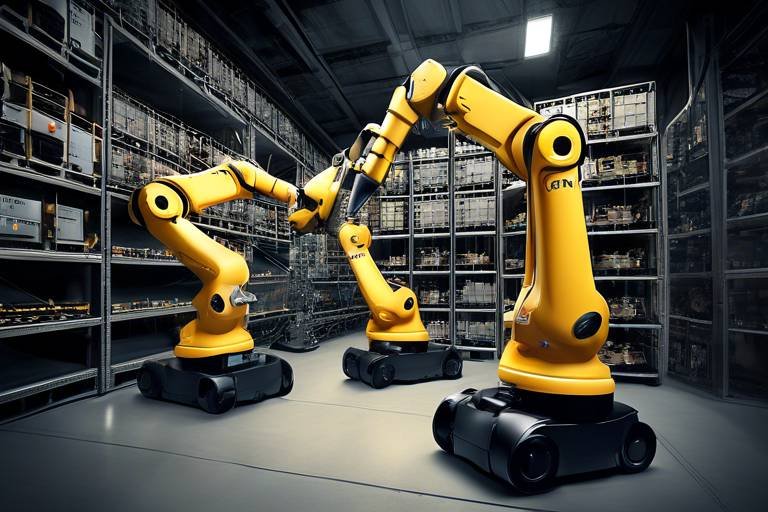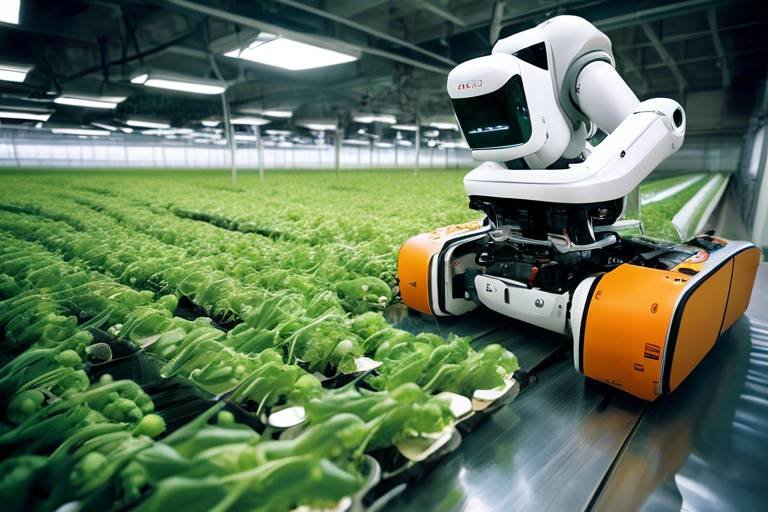How Robotics is Used in Hazardous Material Handling
In today's fast-paced industrial landscape, the handling of hazardous materials poses significant challenges. From toxic chemicals to radioactive waste, the risks associated with these materials are not just theoretical; they can lead to devastating accidents if not managed properly. Enter robotics—a game changer in the realm of hazardous material handling. By integrating advanced robotic systems, industries are not only enhancing safety but also increasing efficiency and ensuring environmental protection. Imagine a world where robots take on the dirty, dangerous jobs that humans once had to do. Sounds like science fiction, right? But it's happening right now!
Robots are revolutionizing the way we handle hazardous materials across various sectors, including manufacturing, healthcare, and waste management. With their ability to operate in environments that are too dangerous for humans, these machines are designed to perform tasks with precision and reliability. Whether it's transporting chemicals in a factory or managing waste at a nuclear facility, robotics minimizes human exposure to perilous situations, allowing workers to focus on safer, more strategic roles.
One of the most exciting aspects of robotics in hazardous material handling is the variety of technologies being employed. From autonomous mobile robots (AMRs) that transport materials to robotic manipulators that perform intricate tasks, the possibilities are endless. Each type of robot brings unique features and capabilities to the table, making them indispensable in the fight against workplace hazards.
But it's not just about the robots themselves; the integration of artificial intelligence (AI) and machine learning is propelling these technologies into new realms of efficiency. Imagine robots that can learn from their environment, adapt to changing conditions, and make real-time decisions. This level of sophistication not only enhances safety but also streamlines operations, resulting in significant cost savings for businesses.
However, the journey to widespread robotics adoption in hazardous material handling is not without its challenges. Technical limitations, regulatory compliance, and the need for specialized training can pose hurdles that companies must navigate. Yet, the benefits far outweigh these obstacles, as the future of robotics in this field looks incredibly promising. As technology continues to advance, we can expect to see even more innovative solutions that will redefine how we approach hazardous material handling.
- What are hazardous materials? Hazardous materials are substances that pose a risk to health, safety, or the environment. This includes chemicals, biological agents, and radioactive materials.
- How do robots improve safety in hazardous material handling? Robots reduce human exposure to dangerous environments, thereby minimizing the risk of accidents and injuries.
- What types of robots are used in hazardous material handling? Common types include autonomous mobile robots (AMRs) for transportation and robotic manipulators for precise handling tasks.
- What challenges do companies face when implementing robotics? Challenges include technical limitations, regulatory compliance, and the need for specialized training for operators.
- What is the future of robotics in hazardous material handling? The future looks bright, with advancements in AI and machine learning expected to enhance efficiency and safety even further.

Introduction to Hazardous Material Handling
When we talk about hazardous materials, we're diving into a world that can be both fascinating and frightening. Hazardous materials are substances that pose a significant risk to health, safety, and the environment. These can range from toxic chemicals and flammable liquids to biological agents and radioactive materials. The challenge of handling these materials safely is not just a technical issue; it's a matter of life and death in many industries. Imagine a factory where workers are exposed to harmful fumes or a laboratory where a small mistake could lead to a catastrophic spill. The stakes are incredibly high.
Understanding what constitutes hazardous materials is crucial for anyone involved in industries such as manufacturing, healthcare, and environmental services. The risks associated with handling these materials can lead to severe consequences, including accidents, health issues, and environmental disasters. For example, improper disposal of hazardous waste can contaminate soil and water sources, affecting entire communities. Therefore, organizations must implement stringent safety protocols and training programs to mitigate these risks.
Moreover, the complexity of hazardous material handling is compounded by regulatory requirements. Various agencies, such as the Occupational Safety and Health Administration (OSHA) and the Environmental Protection Agency (EPA), establish guidelines that must be followed to ensure safety and compliance. These regulations are designed to protect workers and the environment, but they also add layers of complexity to the handling process.
In this landscape, the advent of robotics offers a breath of fresh air. Robots can take on the dangerous tasks that humans should avoid, leading to safer work environments. They can handle, transport, and even dispose of hazardous materials with precision and efficiency that far exceeds human capabilities. With the integration of advanced technologies, we are now able to rethink how we approach hazardous material handling, making it safer and more efficient.
In summary, hazardous material handling is a critical aspect of many industries, fraught with risks and challenges. Understanding the nature of these materials and the associated dangers is the first step in implementing effective safety measures. As we explore the role of robotics in this field, we will uncover how these innovative technologies are transforming the way we manage hazardous materials, ultimately leading to a safer and more sustainable future.

The Role of Robotics in Safety
When it comes to handling hazardous materials, safety is not just a priority; it’s a necessity. Imagine a world where workers no longer have to put their lives on the line to manage dangerous substances. That’s where robotics comes into play. With the advent of advanced robotic systems, industries are witnessing a significant transformation in how they approach safety in hazardous environments. Robots are designed to take on the most perilous tasks, minimizing human exposure to harmful situations. This not only reduces the risk of accidents but also enhances overall workplace safety.
One of the most profound impacts of robotics in safety is their ability to operate in environments that are too dangerous for humans. For instance, consider the handling of toxic chemicals or radioactive materials. In such scenarios, deploying a robot can mean the difference between life and death. Robots equipped with specialized sensors and tools can perform tasks such as detection, containment, and disposal of hazardous materials without putting any human life at risk. This capability is not just about efficiency; it’s about saving lives.
Furthermore, the use of robotics helps in significantly reducing the number of workplace injuries. According to statistics, industries that have integrated robotic systems have reported a substantial decrease in injury rates. For example, a recent study indicated that companies utilizing robotic manipulators for material handling saw a 30% reduction in accidents related to hazardous materials. This is a clear testament to the effectiveness of robotics in enhancing safety.
Additionally, robots can work continuously without fatigue, unlike human workers who may become complacent or exhausted over time. This constant vigilance is crucial in environments where even a momentary lapse in attention can lead to catastrophic outcomes. Robots are programmed to follow strict protocols, ensuring that safety measures are adhered to at all times. They can also be monitored remotely, allowing for real-time assessments of hazardous situations without the need for human presence.
To give you a clearer picture, here’s a table summarizing the key benefits of robotics in hazardous material handling safety:
| Benefit | Description |
|---|---|
| Minimized Human Exposure | Robots take on dangerous tasks, reducing the risk to human workers. |
| Reduced Injury Rates | Significant decrease in workplace accidents and injuries. |
| Continuous Operation | Robots can work tirelessly without fatigue, ensuring constant safety. |
| Remote Monitoring | Allows for real-time assessments without putting humans in harm's way. |
In conclusion, the role of robotics in safety cannot be overstated. As technology continues to advance, we can expect even more innovative solutions that will further enhance safety measures in hazardous material handling. The integration of robotics not only protects workers but also fosters a culture of safety that benefits the entire organization. After all, in the world of hazardous materials, safety isn’t just a goal; it’s a way of life.
- How do robots improve safety in hazardous material handling?
Robots minimize human exposure to dangerous environments, reduce the risk of accidents, and can operate continuously without fatigue. - What types of robots are used in hazardous material handling?
Common types include autonomous mobile robots (AMRs) and robotic manipulators, each designed for specific tasks related to hazardous materials. - Are there any limitations to using robots for safety?
Yes, challenges such as technical limitations, regulatory compliance, and the need for specialized training can impact the effectiveness of robotic systems.

Types of Robotics Used
When it comes to handling hazardous materials, the type of robotics employed plays a crucial role in ensuring safety and efficiency. Various robotic technologies have been developed to tackle the unique challenges posed by these dangerous substances. Among the most prominent types are Autonomous Mobile Robots (AMRs) and Robotic Manipulators, each designed with specific functionalities to meet the demands of hazardous material handling.
Autonomous Mobile Robots are like the delivery trucks of the robotics world. They navigate through facilities, transporting hazardous materials from one location to another without human intervention. Equipped with advanced sensors and navigation systems, these robots can avoid obstacles and adapt to changing environments. This capability not only enhances safety by reducing human exposure but also improves operational efficiency. For instance, in chemical plants, AMRs can transport toxic substances from storage to processing areas, ensuring that workers are kept at a safe distance.
On the other hand, Robotic Manipulators are the precision tools designed for direct interaction with hazardous materials. Think of them as the robotic arms that can perform intricate tasks without the risk of human injury. These manipulators are equipped with specialized grippers and tools that allow them to handle, sort, and package hazardous materials safely. Their design often includes features such as force feedback and high precision, which are essential for operations involving sensitive or dangerous substances. For example, in waste management facilities, robotic manipulators can sort through hazardous waste, ensuring that materials are properly categorized and disposed of without human intervention.
To give you a clearer picture of how these robotic types compare, here's a brief overview:
| Type of Robot | Primary Function | Key Features |
|---|---|---|
| Autonomous Mobile Robots (AMRs) | Transport hazardous materials | Navigation systems, obstacle avoidance, autonomous operation |
| Robotic Manipulators | Handle and manipulate hazardous materials | Precision control, specialized grippers, force feedback |
In conclusion, the integration of these robotic systems into hazardous material handling not only streamlines operations but also significantly mitigates risks associated with human exposure to dangerous environments. As technology continues to advance, we can expect even more innovative solutions to emerge, further enhancing the safety and efficiency of hazardous material management.

Autonomous Mobile Robots
In the realm of hazardous material handling, Autonomous Mobile Robots (AMRs) have emerged as a game-changer. These remarkable machines are designed to navigate complex environments without human intervention, making them invaluable in settings where traditional methods pose significant risks. Imagine a robot that can autonomously transport dangerous chemicals or radioactive materials, all while ensuring the safety of human workers. This is not just a futuristic dream; it’s happening right now!
One of the most compelling advantages of AMRs is their ability to operate in hazardous environments where human presence is limited or entirely unsafe. By taking over these tasks, AMRs significantly reduce the risk of accidents and exposure to harmful substances. For instance, in a chemical manufacturing plant, an AMR can be programmed to transport corrosive materials from one location to another, eliminating the need for workers to handle these substances directly. This not only enhances safety but also boosts efficiency, as these robots can work around the clock without fatigue.
AMRs are equipped with advanced sensors and navigation systems that allow them to map their surroundings and avoid obstacles. They utilize technologies such as LiDAR, cameras, and ultrasonic sensors to create a detailed understanding of their environment. This capability enables them to operate in dynamic settings, adapting to changes as they occur. For example, if a spill occurs, an AMR can reroute itself to avoid the area, ensuring that operations continue smoothly.
Moreover, the integration of Artificial Intelligence (AI) and machine learning into AMRs enhances their functionality. These technologies enable robots to learn from their experiences, improving their performance over time. They can analyze data from past operations to optimize routes and reduce transport times, which is crucial in industries where time is money. In a study conducted by the Robotics Industry Association, it was found that companies deploying AMRs reported a 30% increase in operational efficiency within the first year of implementation.
Real-world applications of AMRs are already making waves across various sectors. For instance, in the nuclear industry, AMRs are deployed to transport radioactive waste securely. In the pharmaceutical sector, they handle sensitive materials, ensuring compliance with strict regulations while minimizing human interaction with hazardous substances. The ability of AMRs to operate in these high-stakes environments not only protects workers but also upholds the integrity of the materials being handled.
As we look to the future, the role of AMRs in hazardous material handling is expected to expand. With continuous advancements in technology, we can anticipate even more sophisticated robots capable of performing complex tasks with higher levels of autonomy and safety. The potential for AMRs to revolutionize hazardous material handling is immense, paving the way for safer workplaces and more efficient operations.

Robotic Manipulators
Robotic manipulators are at the forefront of innovation in hazardous material handling. These sophisticated machines are designed to perform tasks that would otherwise pose significant risks to human workers. Imagine a scenario where a toxic chemical leak occurs—human intervention in such a situation can be perilous. Enter robotic manipulators, the unsung heroes of safety and efficiency. They are engineered to handle various hazardous materials, from corrosive substances to radioactive waste, with precision and reliability.
These manipulators come equipped with advanced features that allow them to operate in extreme conditions. For instance, they often include:
- Articulated Arms: These provide a wide range of motion, mimicking the dexterity of a human arm while maintaining the strength needed to lift heavy loads.
- End Effectors: Specialized tools at the end of the robotic arm, such as grippers and suction devices, are tailored for specific tasks, ensuring safe handling of materials.
- Sensor Technology: Integrated sensors enable manipulators to detect their environment, ensuring they operate safely and effectively, even in unpredictable conditions.
The design of robotic manipulators is not just about functionality; it also emphasizes safety. Many models are built with fail-safes and emergency shut-off mechanisms, which can be crucial in preventing accidents during operation. Additionally, they are often constructed from durable, chemical-resistant materials that can withstand harsh environments, making them ideal for handling hazardous substances.
In real-world applications, robotic manipulators have demonstrated their value across various industries. For example, in the nuclear sector, they are employed to perform maintenance tasks in contaminated areas where human presence is restricted. Similarly, in chemical plants, these robots can manage the loading and unloading of dangerous materials, significantly reducing the risk of human exposure to harmful agents.
Moreover, the integration of robotic manipulators with AI and machine learning technology is revolutionizing their capabilities. These advancements allow robots to learn from their environment and improve their performance over time. For instance, they can adapt to new tasks or optimize their movements to enhance efficiency, making them more versatile than ever before.
In conclusion, robotic manipulators are not just tools; they are vital components of a safer and more efficient approach to hazardous material handling. Their ability to operate in dangerous environments while minimizing human risk underscores their importance in modern industry. As technology continues to evolve, we can expect these manipulators to become even more advanced, paving the way for a future where hazardous materials can be managed with unprecedented safety and precision.
Q: What are robotic manipulators?
A: Robotic manipulators are automated machines designed to handle materials, especially hazardous ones, with precision and safety. They can perform tasks like lifting, moving, and manipulating objects in various industrial settings.
Q: How do robotic manipulators improve safety?
A: By taking over tasks that are dangerous for humans, such as handling toxic chemicals or working in contaminated areas, robotic manipulators significantly reduce the risk of accidents and injuries.
Q: Can robotic manipulators adapt to different tasks?
A: Yes, with the integration of AI and machine learning, robotic manipulators can learn from their environment and adapt their operations, making them versatile for various applications.
Q: What industries benefit from robotic manipulators?
A: Many industries, including nuclear, chemical, and manufacturing, utilize robotic manipulators to enhance safety and efficiency in hazardous material handling.
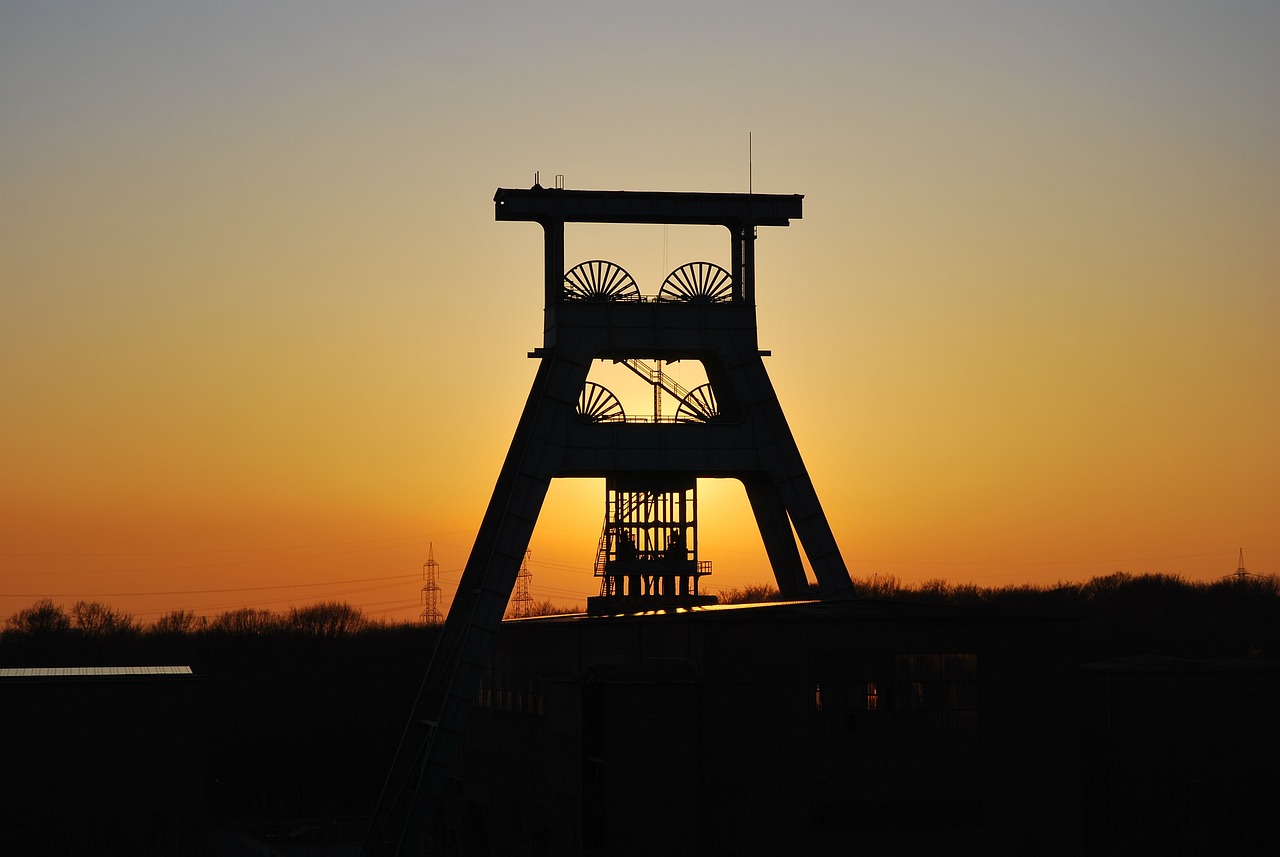
Integration with AI and Machine Learning
The integration of Artificial Intelligence (AI) and Machine Learning (ML) with robotics has revolutionized the way hazardous materials are handled across various industries. Imagine a world where robots not only perform tasks but also learn and adapt to their environments in real-time. This synergy empowers robotic systems to enhance decision-making capabilities, making them more efficient and effective in managing dangerous substances. For instance, AI algorithms can analyze vast amounts of data collected from sensors and cameras, enabling robots to identify potential hazards before they escalate into serious incidents.
One of the most significant advantages of integrating AI and ML into robotic systems is their ability to predict and respond to changing conditions. By utilizing advanced data analytics, these systems can forecast potential risks associated with hazardous material handling. For example, if a robot detects an unusual temperature rise in a storage area, it can immediately alert human operators or take preemptive measures to mitigate the risk. This proactive approach not only enhances safety but also minimizes downtime, which is crucial in industries where time is money.
Moreover, AI and ML enable robots to learn from past experiences. By analyzing historical data, these systems can improve their performance over time, becoming more adept at handling specific types of hazardous materials. This continuous learning process is akin to a human worker gaining experience on the job, leading to improved efficiency and reduced error rates. In fact, studies show that robots equipped with AI capabilities can outperform traditional methods of hazardous material handling by a significant margin.
To illustrate the impact of AI and ML in hazardous material handling, consider the following table that highlights some key benefits:
| Benefit | Description |
|---|---|
| Enhanced Safety | Robots can operate in dangerous environments, reducing the risk of human exposure to hazardous materials. |
| Increased Efficiency | AI-driven robots can optimize routes and improve task completion times, leading to higher productivity. |
| Real-time Monitoring | Integrated sensors provide continuous data, allowing for immediate response to hazardous conditions. |
| Cost Savings | Reduced accidents and improved efficiency can lead to significant cost reductions in hazardous material management. |
In conclusion, the integration of AI and machine learning with robotics in hazardous material handling is not just a trend; it’s a game-changer. As industries continue to embrace these technologies, we can expect to see even more sophisticated systems that enhance safety, improve efficiency, and ultimately protect both workers and the environment. The potential for innovation in this field is immense, and it’s exciting to think about the future possibilities that await us.
- What types of hazardous materials can robots handle? Robots can handle a wide range of hazardous materials, including chemicals, radioactive substances, and biological agents.
- How do AI and ML improve robotic performance? AI and ML enable robots to learn from past experiences, analyze data in real-time, and make informed decisions, leading to improved efficiency and safety.
- Are there any risks associated with using robots for hazardous material handling? While robots reduce human exposure to hazards, there are still risks related to technical failures or unexpected environmental changes that must be managed.
- What industries benefit the most from robotics in hazardous material handling? Industries such as chemical manufacturing, nuclear energy, waste management, and pharmaceuticals greatly benefit from robotic applications in hazardous material handling.

Challenges in Robotics Implementation
Implementing robotics in hazardous material handling is not as simple as it sounds. While the benefits are clear, the journey to integrating these advanced technologies comes with its own set of challenges. Imagine trying to navigate a maze while blindfolded—this is somewhat akin to what industries face when deploying robotic systems in dangerous environments. The hurdles can range from technical limitations to regulatory compliance issues, each presenting its unique set of complexities.
One of the primary hurdles is technical limitations. Robotics technology, while advanced, still has its quirks. For instance, sensor accuracy can be a significant issue. In hazardous environments, sensors must detect and respond to various stimuli—like chemical leaks or physical obstacles. If a sensor misreads its surroundings, it could lead to catastrophic consequences. Furthermore, the adaptability of robots to extreme conditions—such as temperature fluctuations, humidity, or the presence of toxic substances—can pose challenges. The designs of these robots must be robust enough to withstand such harsh conditions without compromising their functionality.
Another major challenge lies in regulatory and compliance issues. The use of robotics in hazardous material handling is governed by a complex web of regulations designed to ensure safety and environmental protection. Industries must navigate these regulations carefully, as failing to comply can result in hefty fines or operational shutdowns. For example, the Occupational Safety and Health Administration (OSHA) and the Environmental Protection Agency (EPA) have specific guidelines regarding the use of robotics in environments where hazardous materials are present. Companies must ensure that their robotic systems meet these standards, which can sometimes slow down the implementation process.
Moreover, the need for specialized training cannot be overlooked. Even the most advanced robotic systems require human oversight and intervention. Workers need to be trained not only on how to operate these robots but also on how to respond in emergencies. This training can be time-consuming and costly, adding another layer of complexity to the implementation process. Companies must invest in comprehensive training programs to ensure that their employees are adequately prepared to work alongside robotic systems safely.
In summary, while the integration of robotics into hazardous material handling offers numerous advantages, the path is fraught with challenges. From technical limitations and regulatory compliance to the need for specialized training, companies must be prepared to tackle these obstacles head-on. Overcoming these challenges is crucial for harnessing the full potential of robotics in enhancing safety and efficiency in hazardous environments.
- What are the main challenges in implementing robotics for hazardous material handling?
The main challenges include technical limitations, regulatory compliance issues, and the need for specialized training. - How do technical limitations affect robotics in hazardous environments?
Technical limitations can lead to issues with sensor accuracy and environmental adaptability, which are critical for safe operation in hazardous conditions. - What role do regulations play in robotics implementation?
Regulations ensure safety and environmental protection, but navigating them can slow down the deployment of robotic systems. - Why is specialized training important for employees working with robotics?
Specialized training ensures that employees can operate robotic systems safely and respond effectively in emergencies.

Technical Limitations
When it comes to the implementation of robotics in hazardous material handling, one cannot overlook the that pose significant challenges. These limitations can hinder the effectiveness and reliability of robotic systems, ultimately impacting safety and efficiency in environments filled with potential hazards. For instance, sensor accuracy is a crucial factor. Sensors are the eyes and ears of robots; if they fail to accurately detect their surroundings, the risks involved can escalate dramatically. Imagine a robot navigating through a chemical spill. If its sensors misinterpret the severity of the situation, it could lead to catastrophic results.
Moreover, environmental adaptability is another hurdle that robotics must overcome. Hazardous environments often present unpredictable conditions, such as extreme temperatures, humidity, or the presence of corrosive substances. Robots need to be designed to withstand these factors without compromising their functionality. The materials used in robotic construction must be durable and resistant to wear and tear, which can sometimes limit design options.
Another significant limitation is the need for robust designs. In hazardous material handling, robots are often required to perform complex tasks that demand high precision. If a robot's design is not robust enough, it may not be able to execute these tasks effectively. For example, a robotic manipulator that lacks the necessary strength may struggle to lift heavy containers of hazardous materials, leading to delays and increased risk of accidents.
Furthermore, the integration of advanced technologies, such as artificial intelligence and machine learning, while promising, also brings its own set of challenges. The algorithms that drive these technologies must be finely tuned to ensure they can make accurate decisions in real-time. If the algorithms are not sophisticated enough, the robots may misinterpret data, leading to inefficiencies or unsafe conditions.
To summarize, while robotics holds immense potential for improving hazardous material handling, several technical limitations must be addressed. These include:
- Sensor accuracy
- Environmental adaptability
- Robust design
- Advanced algorithms for AI integration
Addressing these challenges is crucial for the successful deployment of robotic systems in hazardous environments. As technology advances, we can expect improvements in these areas, paving the way for safer and more efficient operations in the future.
- What are the main technical limitations of robotics in hazardous material handling? The main limitations include sensor accuracy, environmental adaptability, robust design, and the need for advanced algorithms for AI integration.
- How can sensor accuracy impact safety in hazardous environments? If sensors fail to accurately detect their surroundings, it can lead to catastrophic results, especially in situations involving chemical spills or other dangerous materials.
- Why is environmental adaptability important for robotics? Hazardous environments can present unpredictable conditions, and robots must be designed to withstand extreme temperatures, humidity, and corrosive substances.
- What role does AI play in improving robotics for hazardous material handling? AI enhances decision-making capabilities, allowing robots to navigate and manage hazardous materials more effectively, but it requires sophisticated algorithms to function properly.
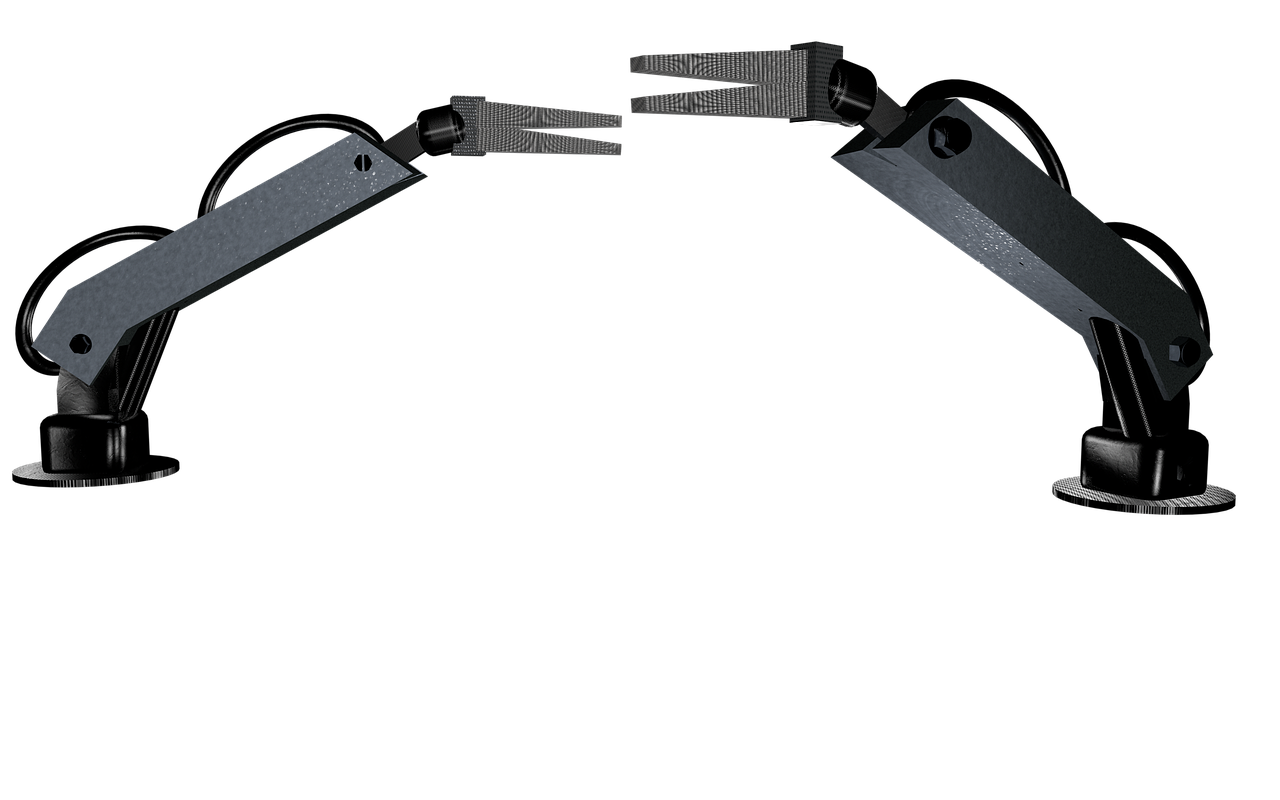
Regulatory and Compliance Issues
When it comes to the integration of robotics in hazardous material handling, regulatory and compliance issues play a pivotal role. These regulations are not just bureaucratic hurdles; they are essential frameworks designed to ensure safety and efficiency in environments where dangers lurk. Imagine navigating a minefield without a map—this is akin to deploying robotics without adhering to established guidelines. Compliance with these regulations is crucial for protecting not only the workforce but also the surrounding environment.
Regulatory bodies, such as the Occupational Safety and Health Administration (OSHA) in the United States, have set forth stringent guidelines that govern the use of robotics in hazardous material environments. These regulations outline the necessary safety measures, training requirements, and operational protocols that must be followed. For instance, the use of autonomous mobile robots (AMRs) must comply with specific safety standards to prevent accidents and ensure they can operate safely alongside human workers. The compliance process often involves rigorous testing and certification to validate that robotic systems meet these safety standards.
Moreover, companies must stay abreast of local, national, and international regulations that can vary significantly. This can lead to a complex web of compliance requirements that organizations must navigate. For example, the European Union has its own set of directives, such as the Machinery Directive, which mandates that all machinery, including robots, must meet certain safety and health requirements. Failure to comply with these regulations can result in severe penalties, including fines and operational shutdowns.
In addition to safety regulations, there are also environmental compliance issues that companies must consider. Handling hazardous materials often involves strict waste management protocols to prevent contamination and protect public health. Robotics can aid in these processes, but they must be designed and operated in accordance with environmental laws. For instance, if a robotic manipulator is used to handle toxic substances, it must be equipped with features that ensure safe containment and disposal of those materials.
Training is another critical component of compliance. Workers must be adequately trained not only to operate robotic systems but also to understand the regulatory landscape that governs their use. This training ensures that employees can identify potential hazards and respond appropriately, which is vital in maintaining a safe working environment.
In summary, while robotics offers exciting possibilities in hazardous material handling, the path to implementation is fraught with regulatory and compliance challenges. Companies must invest time and resources into understanding and adhering to these regulations to leverage the full potential of robotics safely. Ignoring these issues can lead to catastrophic consequences, not just for the organization but for the safety of all involved.
- What are the key regulations governing robotics in hazardous material handling? Regulations vary by region but often include safety standards from organizations like OSHA and environmental compliance laws that dictate how hazardous materials must be managed.
- How can companies ensure compliance with these regulations? Companies can ensure compliance by staying informed about relevant laws, conducting regular training for employees, and implementing robust safety and operational protocols.
- What are the consequences of non-compliance? Non-compliance can lead to severe penalties, including fines, legal action, and potential harm to employees and the environment.
- Are there specific training requirements for employees operating robotics? Yes, employees must receive training on both the operation of robotic systems and the regulatory requirements associated with hazardous material handling.
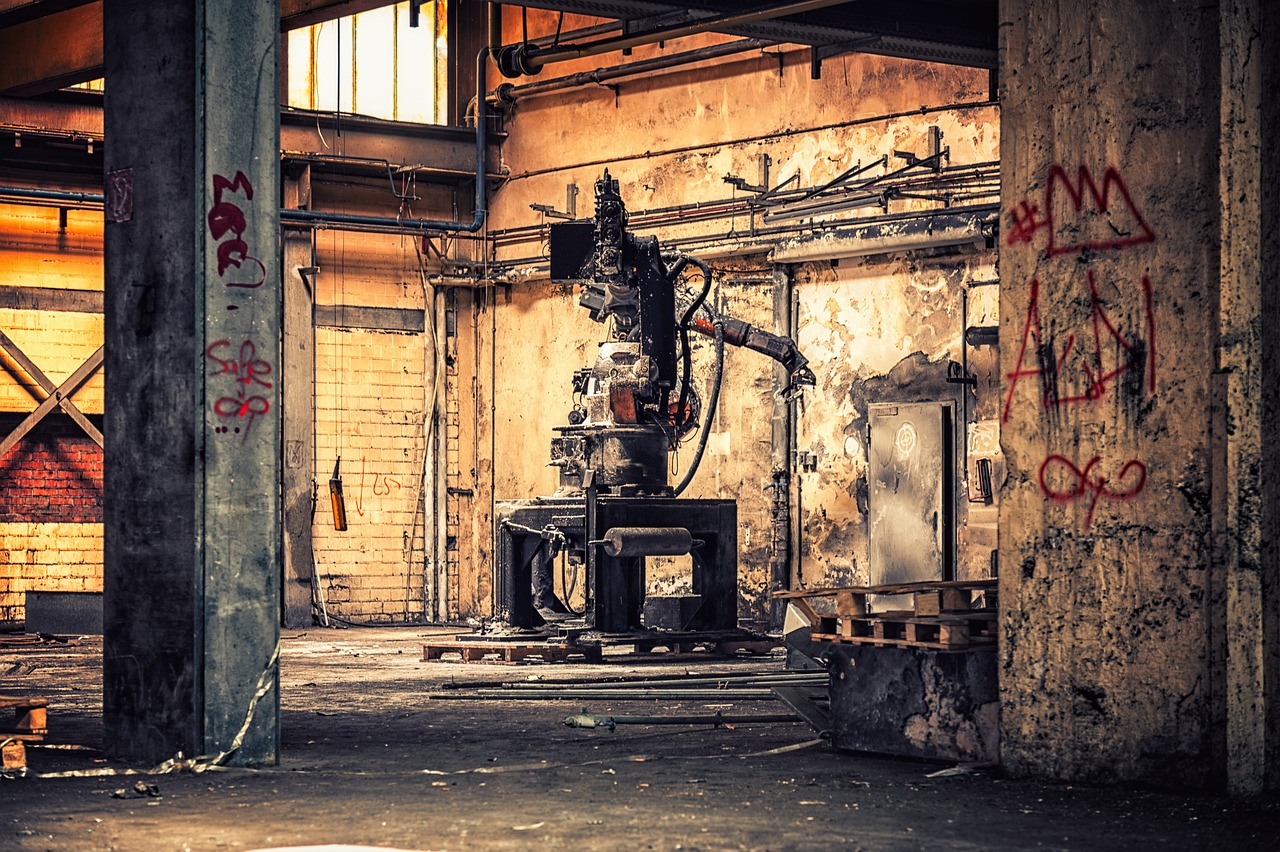
Future Trends in Robotics for Hazardous Material Handling
The future of robotics in hazardous material handling is not just bright; it’s sparkling with potential! As industries continue to evolve, so do the technologies that support them. Robotics is set to revolutionize the way we manage hazardous materials, making the process safer, more efficient, and environmentally friendly. Imagine a world where robots handle the most dangerous tasks, allowing humans to focus on strategic decision-making instead of putting their lives at risk. Sounds exciting, right?
One of the most significant trends is the increasing integration of advanced artificial intelligence (AI) and machine learning into robotic systems. This integration will enable robots to learn from their environment, adapt to changing conditions, and make real-time decisions. For instance, a robot equipped with AI could analyze hazardous material spills and determine the best course of action, whether it’s containment or cleanup, all while minimizing human intervention. The potential for AI to enhance operational efficiency is enormous, and it’s likely that we’ll see more sophisticated AI algorithms developed specifically for this purpose.
Moreover, the emergence of collaborative robots (cobots) is another exciting trend. These robots are designed to work alongside humans, enhancing safety and productivity in hazardous environments. Unlike traditional robots that operate in isolation, cobots can assist workers by performing repetitive or dangerous tasks, thus reducing the risk of accidents. For example, a cobot might handle the transfer of toxic materials from one location to another, allowing human workers to oversee the process from a safe distance. This collaboration between human and machine is set to redefine workplace safety standards.
In addition, we can expect advancements in sensors and monitoring technologies. Future robotic systems will likely be equipped with more sophisticated sensors that can detect hazardous materials, assess risks, and even predict potential failures before they occur. Imagine a robot that can not only identify a chemical leak but also analyze the substance and alert the necessary personnel. This proactive approach to hazard management could save lives and prevent costly environmental damage.
Furthermore, the implementation of robotic process automation (RPA) in hazardous material handling is gaining traction. RPA can streamline workflows, reduce human error, and increase overall efficiency. By automating routine tasks, companies can allocate their human resources to more critical areas, thus enhancing productivity. For instance, automated inventory management systems can track hazardous materials in real-time, ensuring compliance with safety regulations and reducing the risk of mishandling.
Finally, as we look towards the future, it’s essential to consider the impact of regulatory changes on robotics in hazardous material handling. As governments and organizations recognize the benefits of robotic technologies, we can expect more supportive regulations that promote innovation while ensuring safety. This shift could lead to faster adoption of robotics across various industries, paving the way for safer handling of hazardous materials.
In conclusion, the future trends in robotics for hazardous material handling are not just about technology; they are about creating a safer, more efficient workplace. With advancements in AI, collaborative robots, enhanced sensors, and regulatory support, we are on the brink of a new era in hazardous material management. The possibilities are endless, and the benefits are clear: safer workers, better environmental protection, and improved operational efficiency. Are you ready to embrace the future?
- What are the main benefits of using robotics in hazardous material handling? Robotics enhances safety, improves efficiency, and reduces human exposure to dangerous environments.
- How does AI improve robotic systems used in hazardous material handling? AI allows robots to learn from their environment, make real-time decisions, and adapt to changing conditions, enhancing their effectiveness.
- What are collaborative robots (cobots)? Cobots are robots designed to work alongside humans, assisting with dangerous or repetitive tasks to reduce risk.
- What role do sensors play in the future of robotics? Advanced sensors will help robots detect hazardous materials, assess risks, and predict potential failures, improving safety and efficiency.
Frequently Asked Questions
- What are hazardous materials?
Hazardous materials are substances that pose a risk to health, safety, or the environment. They can be chemical, biological, or radiological in nature, and their improper handling can lead to serious accidents or health issues.
- How do robotics improve safety in hazardous material handling?
Robotics enhance safety by taking humans out of dangerous situations. They can operate in environments that are toxic or unstable, thereby significantly reducing the risk of accidents and exposure to harmful substances.
- What types of robots are used in hazardous material handling?
There are various types of robots used, including Autonomous Mobile Robots (AMRs) for transportation and robotic manipulators for precise handling tasks. Each type is designed to suit specific functions in hazardous environments.
- What are Autonomous Mobile Robots (AMRs)?
AMRs are robots that can navigate and transport materials without human intervention. They are equipped with sensors and AI, allowing them to move safely through complex environments while carrying hazardous materials.
- What challenges do companies face when implementing robotics?
Companies may encounter technical limitations, such as sensor accuracy and environmental adaptability, as well as regulatory compliance issues. Training staff to operate and maintain these robots is also a significant challenge.
- How does AI improve robotics in hazardous material handling?
AI enhances robotic systems by enabling better decision-making and adaptability in real-time. It allows robots to learn from their environment, improving efficiency and effectiveness in handling hazardous materials.
- What future trends can we expect in robotics for hazardous material handling?
The future looks bright with advancements in AI, machine learning, and robotics technology. We can expect more sophisticated robots that can handle increasingly complex tasks and improve safety and efficiency in hazardous material handling.

